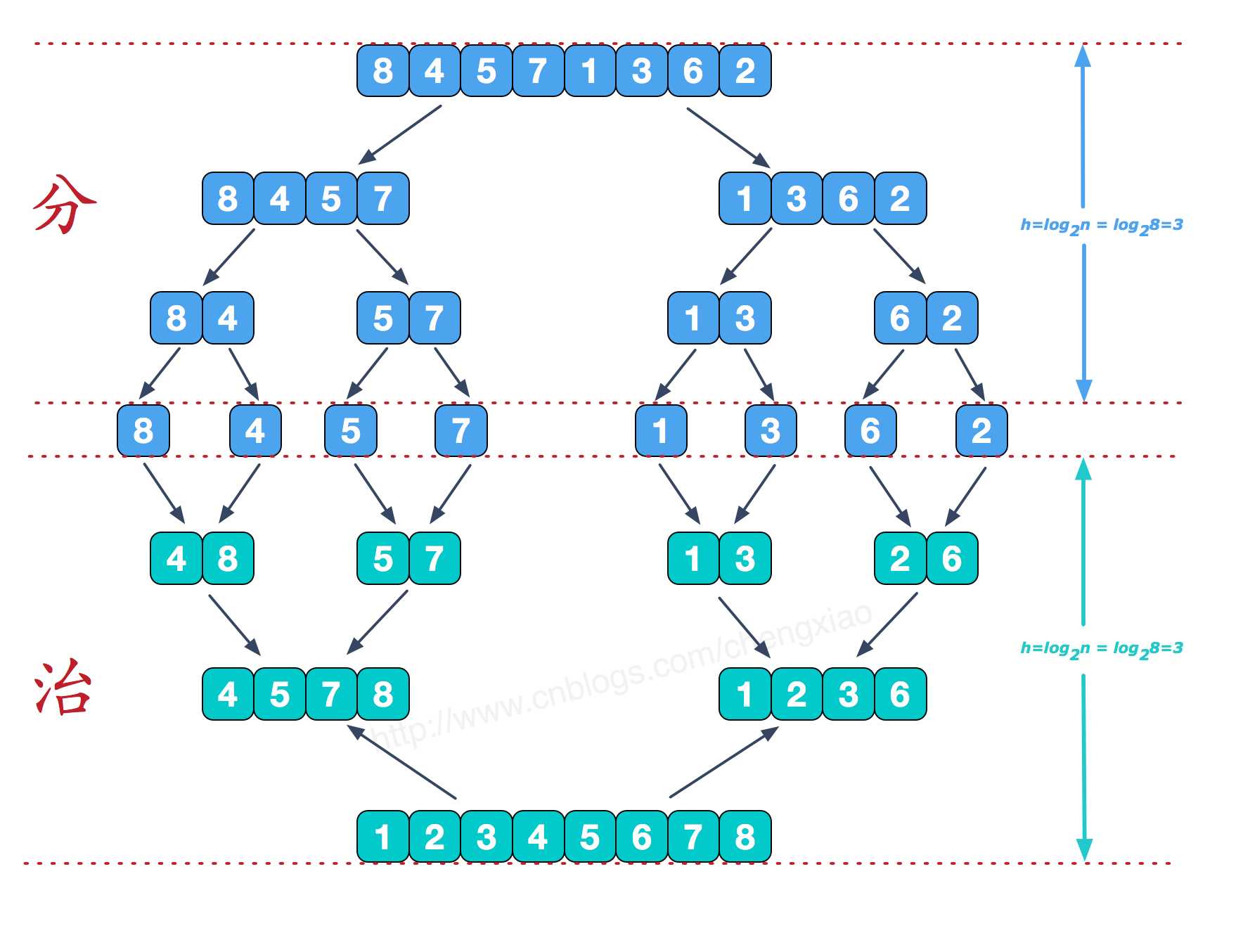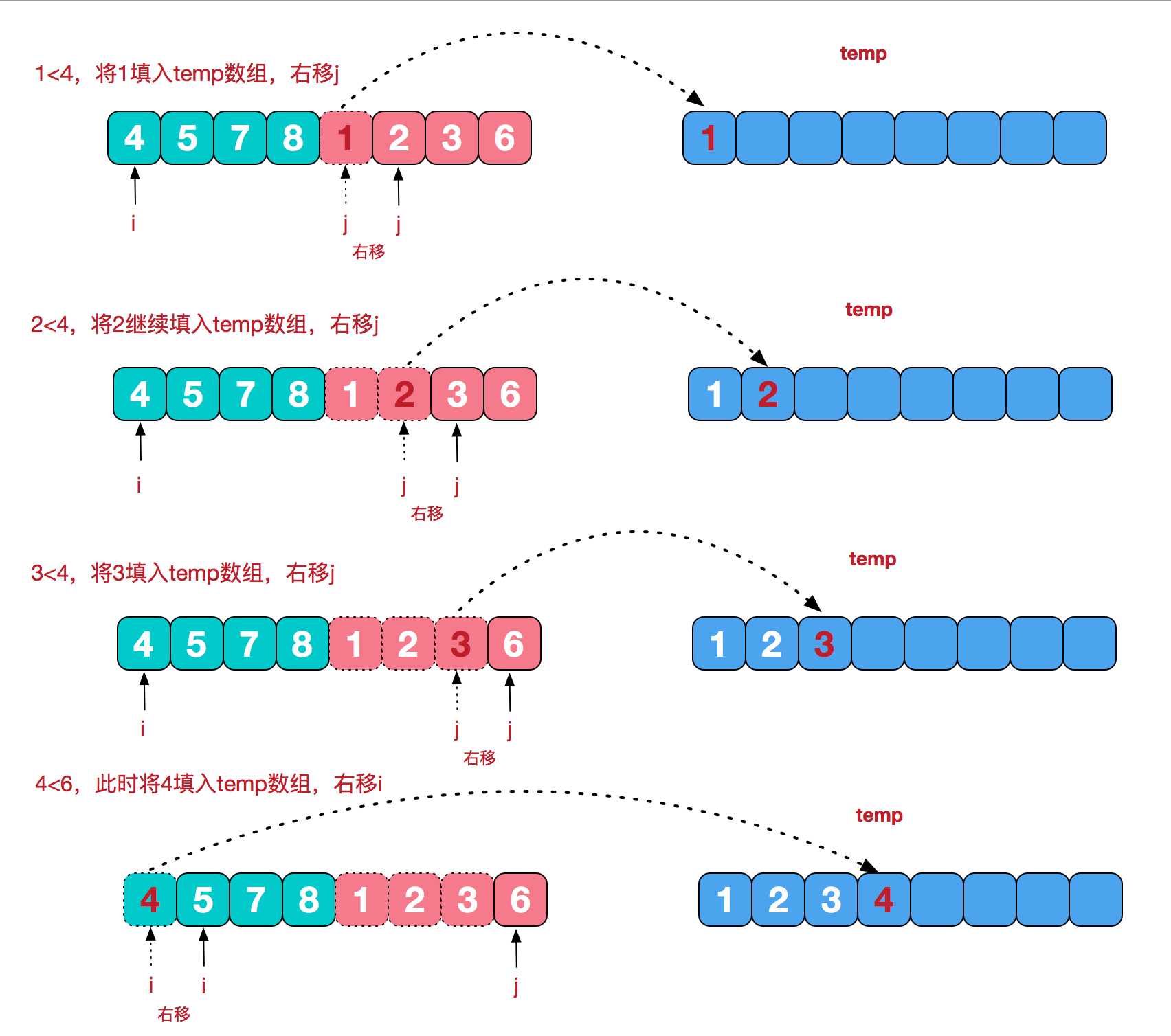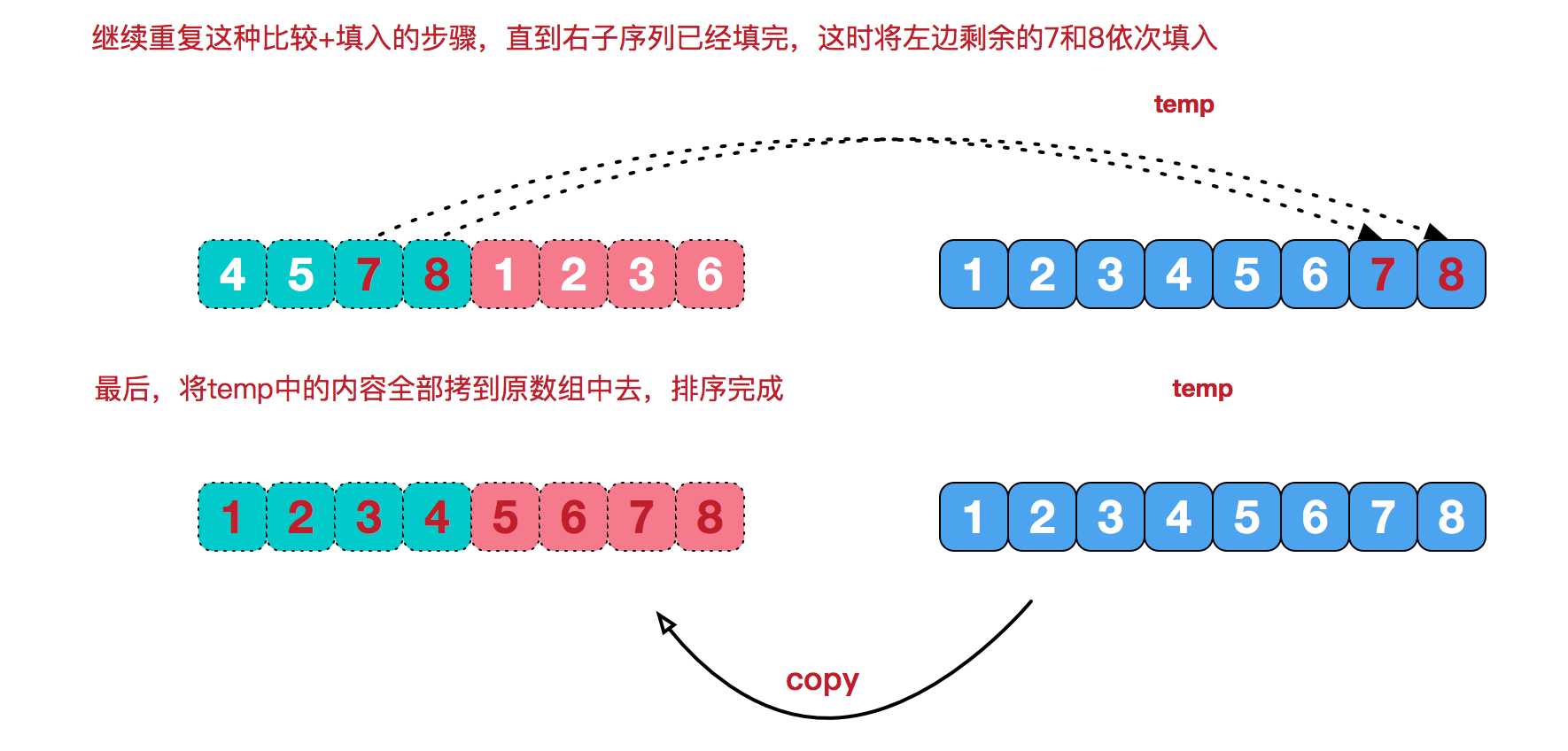基本思想
归并排序(MERGE-SORT)是利用归并的思想实现的排序方法,该算法采用经典的分治(divide-and-conquer)策略(分治法将问题分(divide)成一些小的问题然后递归求解,而治(conquer)的阶段则将分的阶段得到的各答案"修补"在一起,即分而治之)。
分而治之

可以看到这种结构很像一棵完全二叉树,本文的归并排序我们采用递归去实现(也可采用迭代的方式去实现)。分阶段可以理解为就是递归拆分子序列的过程,递归深度为log2n。
合并相邻有序子序列
再来看看治阶段,我们需要将两个已经有序的子序列合并成一个有序序列,比如上图中的最后一次合并,要将[4,5,7,8]和[1,2,3,6]两个已经有序的子序列,合并为最终序列[1,2,3,4,5,6,7,8],来看下实现步骤。


代码实现

1 package sortdemo; 2 3 import java.util.Arrays; 4 5 /** 6 * Created by chengxiao on 2016/12/8. 7 */ 8 public class MergeSort { 9 public static void main(String []args){ 10 int []arr = {9,8,7,6,5,4,3,2,1}; 11 sort(arr); 12 System.out.println(Arrays.toString(arr)); 13 } 14 public static void sort(int []arr){ 15 int []temp = new int[arr.length];//在排序前,先建好一个长度等于原数组长度的临时数组,避免递归中频繁开辟空间 16 sort(arr,0,arr.length-1,temp); 17 } 18 private static void sort(int[] arr,int left,int right,int []temp){ 19 if(left<right){ 20 int mid = (left+right)/2; 21 sort(arr,left,mid,temp);//左边归并排序,使得左子序列有序 22 sort(arr,mid+1,right,temp);//右边归并排序,使得右子序列有序 23 merge(arr,left,mid,right,temp);//将两个有序子数组合并操作 24 } 25 } 26 private static void merge(int[] arr,int left,int mid,int right,int[] temp){ 27 int i = left;//左序列指针 28 int j = mid+1;//右序列指针 29 int t = 0;//临时数组指针 30 while (i<=mid && j<=right){ 31 if(arr[i]<=arr[j]){ 32 temp[t++] = arr[i++]; 33 }else { 34 temp[t++] = arr[j++]; 35 } 36 } 37 while(i<=mid){//将左边剩余元素填充进temp中 38 temp[t++] = arr[i++]; 39 } 40 while(j<=right){//将右序列剩余元素填充进temp中 41 temp[t++] = arr[j++]; 42 } 43 t = 0; 44 //将temp中的元素全部拷贝到原数组中 45 while(left <= right){ 46 arr[left++] = temp[t++]; 47 } 48 } 49 }
执行结果
[1, 2, 3, 4, 5, 6, 7, 8, 9]
最后
归并排序是稳定排序,它也是一种十分高效的排序,能利用完全二叉树特性的排序一般性能都不会太差。java中Arrays.sort()采用了一种名为TimSort的排序算法,就是归并排序的优化版本。从上文的图中可看出,每次合并操作的平均时间复杂度为O(n),而完全二叉树的深度为|log2n|。总的平均时间复杂度为O(nlogn)。而且,归并排序的最好,最坏,平均时间复杂度均为O(nlogn)。
标签:strong 完全 思想 tostring 结果 组合 十分 就是 isp
原文地址:https://www.cnblogs.com/GardenKeeper/p/9844914.html

